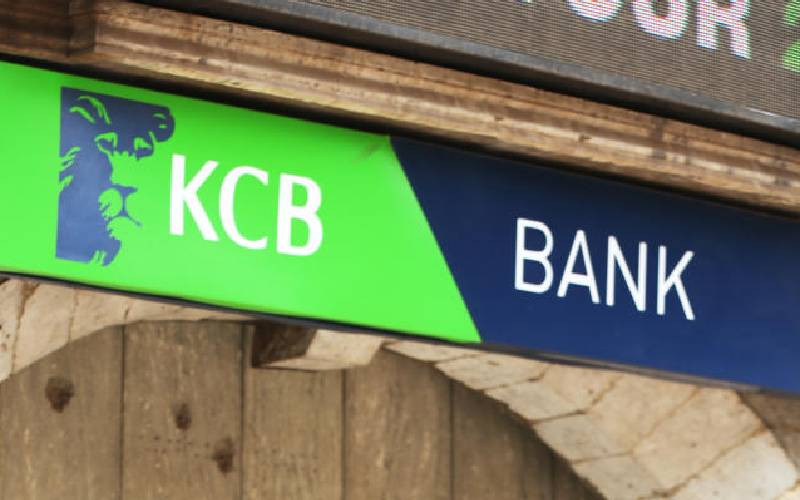
At the most fundamental level, supply and demand in the market determine stock price changes.
All other factors advanced as reasons for price change, such as company, industry or sector performance, do not have a direct impact on prices.
What they do is affect the desirability to own or sell a stock. When some traders actualise their desires during the trading session, that is the point at which the price actually changes.
This alters the demand/supply balance and creates a market for further trades at a different price level.
The law of demand and supply is king in any market. No matter how well a company performs, the price of its stock will not go anywhere if there is no demand for it.
Similarly, the stock of a poorly performing business can skyrocket if market participants become enthusiastic about it for reasons that may not even be fundamental.
If a company surprises stock owners with low earnings, demand for the stock may wither.
If this happens, the equilibrium between demand and supply of the stock is altered. Future buyers will require a discount on the stock’s price and many sellers will need to be motivated to accommodate that price, whatever the cause will be. More sellers than buyers mean that supply will exceed demand, so the price falls.
At some point, a stock’s price will drop enough for buyers to find it attractive. There are many factors that can change this dynamic.
As buyers move into the market for a stock, demand grows faster than supply and so the price will increase.
Often, supply and demand find equilibrium at a price that is acceptable to both buyers and sellers.
When supply and demand balance, so that they are roughly equal, prices will gyrate up and down in a narrow price range.
There are many examples of stocks staying in a flat range for days or months before an event disrupts the supply/demand balance. This period is referred to as consolidation.
If demand for a stock exceeds the supply, its price will rise. However, it will only rise to the point where buyers find the price attractive, after which demand will typically wane.
Normally, declining demand will cause stock owners to sell. As owners sell (for whatever reason), the price will fall because there is now more supply than demand. By dropping the price, sellers of a stock hope to encourage buyers. This dynamic works just the same when demand increases but in reverse. As the price falls, it will reach a level where buyers find the stock attractive, and demand will increase.
When investors start buying, the stock’s price will rise as more and more sellers need to be enticed to sell their shares. The mechanics of supply and demand is the most important truth that new investors need to learn about stock prices. It is the give and take between supply and demand that sets the price. The law of demand and supply is supreme in the market.
If stock prices are a direct result of demand and supply, then it follows that those who own many shares of a particular company or have lots of money are the ones who influence stock prices most.
Examples of such entities are institutions like mutual funds, pension funds, endowment funds, banks, insurance firms and high-net-worth individuals.
These entities trade in sufficient volume to impact stock prices. Their large transactions drive stock prices up or down, depending on the number and speed at which they buy or sell.
This is the reason why when institutions want to offload or buy a stock, they have to do so slowly.
If they flood the market at once with sell or buy orders, it will create a huge supply or demand respectively. This will drive the price down or up very fast to their disadvantage.
Identifying stocks for institutional buying or selling is critical in locating stocks that are ready to make large price moves.
Stocks with huge numbers of outstanding shares, in particular, require institutional support for their prices to move significantly.
Retail traders dealing in small quantities of shares will not move such stocks. In order to profit, what the retailers can do is follow in the footsteps of the institutions and buy or sell ahead of them.
Charts are very useful in sniffing out institutional moves. How is this information useful to the investor and especially the small one?
Look for stocks with rising demand? How do you know this? Look at trading volumes and volume-based charts like OBV as well as momentum indicators.
If a share trades on a daily average volume of 200,000 and suddenly starts trading over that average, it is an indicator of demand or supply rising.
Watch that stock! It could be headed down or up. It could be time to buy or sell. Consider other factors to see the direction it is likely to go. Begin with a small amount before increasing your holding if signals for rising demand continue to hold.
The writer is the author of The Ultimate Framework for Success in Shares. [email protected]
 The Standard Group Plc is a multi-media organization with investments in media
platforms spanning newspaper print operations, television, radio broadcasting,
digital and online services. The Standard Group is recognized as a leading
multi-media house in Kenya with a key influence in matters of national and
international interest.
The Standard Group Plc is a multi-media organization with investments in media
platforms spanning newspaper print operations, television, radio broadcasting,
digital and online services. The Standard Group is recognized as a leading
multi-media house in Kenya with a key influence in matters of national and
international interest.
 The Standard Group Plc is a multi-media organization with investments in media
platforms spanning newspaper print operations, television, radio broadcasting,
digital and online services. The Standard Group is recognized as a leading
multi-media house in Kenya with a key influence in matters of national and
international interest.
The Standard Group Plc is a multi-media organization with investments in media
platforms spanning newspaper print operations, television, radio broadcasting,
digital and online services. The Standard Group is recognized as a leading
multi-media house in Kenya with a key influence in matters of national and
international interest.










